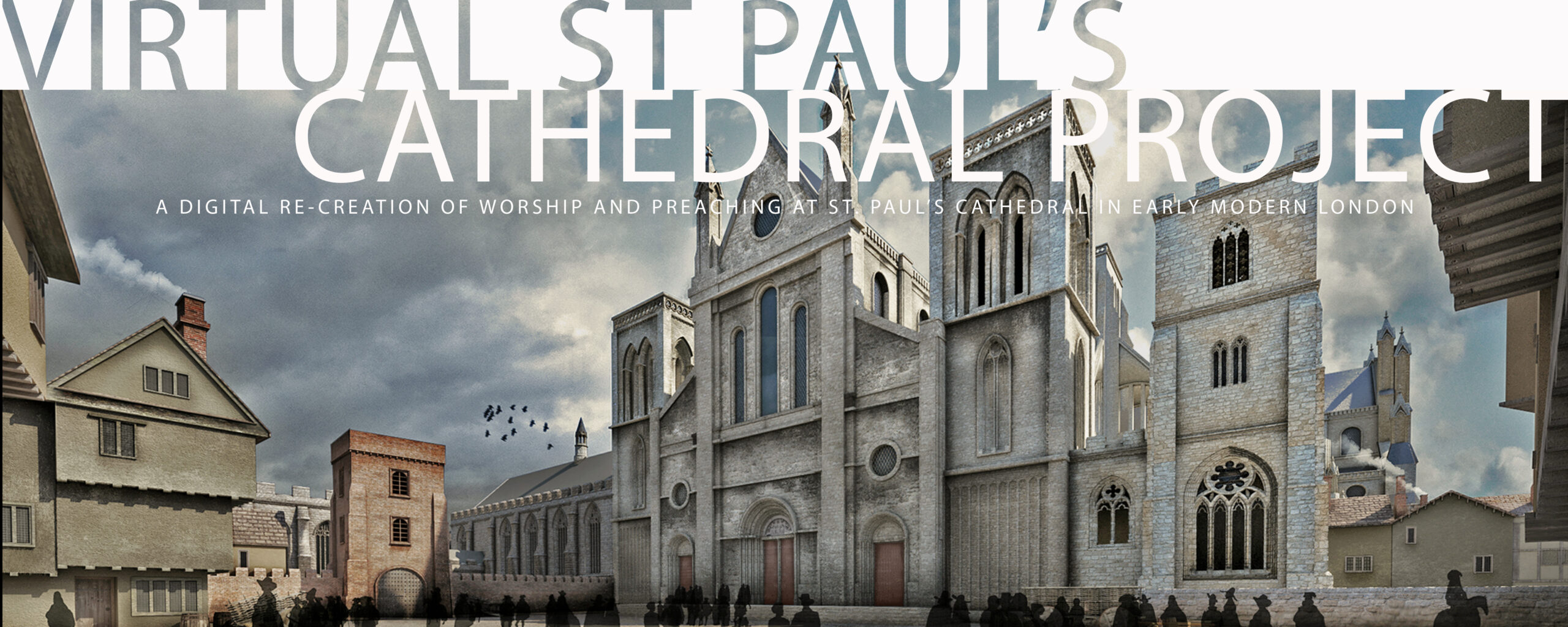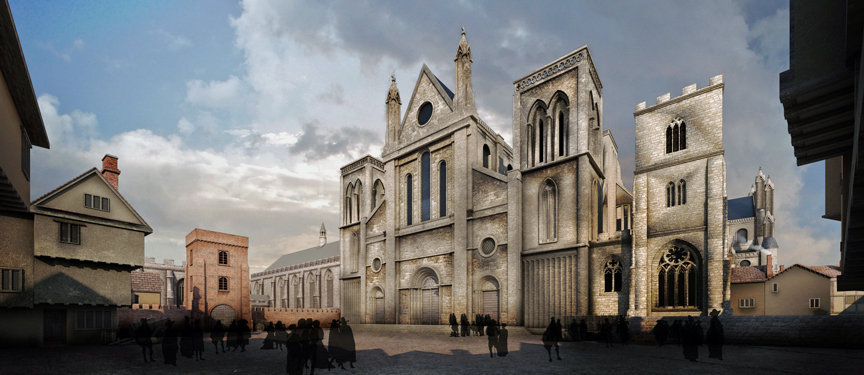
Paul’s Churchyard in the 1620’s was home to a large number of people, many of whom were directly involved in the life of the Cathedral and of the Diocese of London. The included the Bishop of London and his staff, as well as the Dean of the Cathedral and his staff, the Officers of the Cathedral, and the Residential Canons, plus those responsible for the worship services and their music, and for the maintenance and upkeep of the Cathedral itself.1
Prior to the Reformation, the majority of folks who lived inside the Churchyard were likely to have been involved in one way or another in the life and work of the Diocese or the Cathedral. After the Reformation, however, changes like the abandonment of pilgrimages, the saying of Mass for the repose of the souls of the dead, and other features of medieval religious life caused a drop in the number of people working directly in and for the Cathedral.
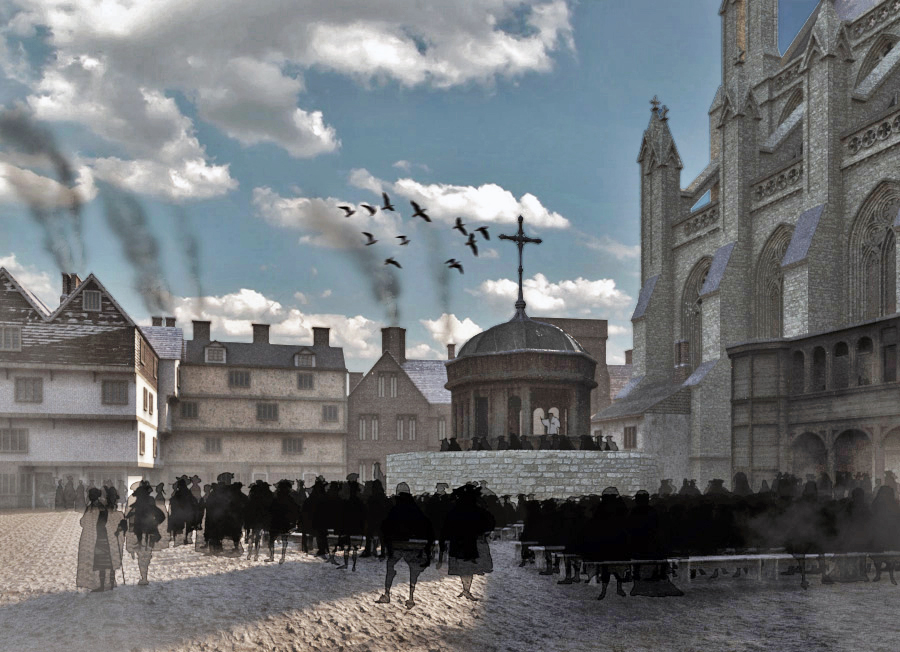
As a result, space opened up in existing buildings for rental to people involved in other forms of work. Space in the Churchyard also became available for new buildings with new purposes to be constructed. As a result, in addition to those still directly connected to life at the heart of the Diocese of London, there came to be a growing number of people involved in other forms of activity, most notably in the rapidly-developing English book trade.
During the 16th century, the merchandizing of books in Paul’s Churchyard had developed from booksellers working from carts to building bookstalls to opening bookshops on the ground floors of houses built inside the Churchyard, especially in the northeast quadrant of the Churchyard. Others working — and perhaps living as well — inside the Churchyard included skilled craftspersons who built their workshops against the Cathedral’s walls. 2
This section of the website catalogues known employees of the Bishop of London, known employees of St Paul’s Cathedral, and members of their staffs. Scholarship on the book trade in Paul’s Churchyard will supply details of printers and booksellers with books for sale in the Bookshops of Paul’s Churchyard. Discovering other people living and/or working in Paul’s Churchyard is a worthy subject of future research.
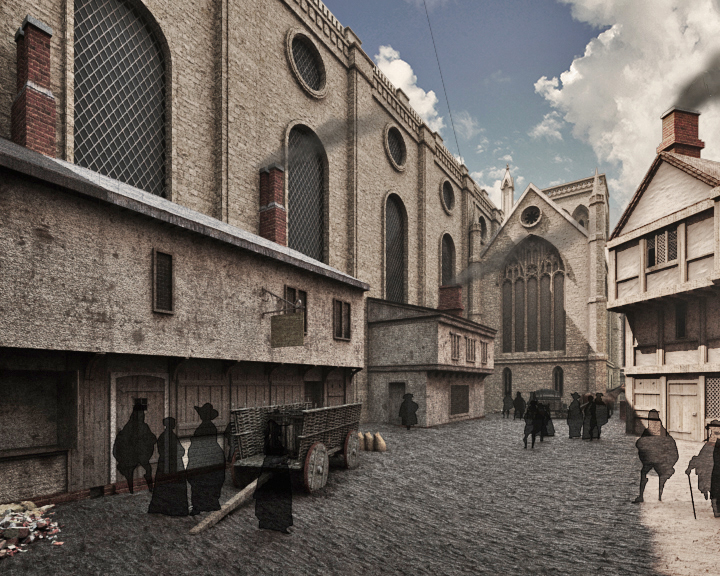
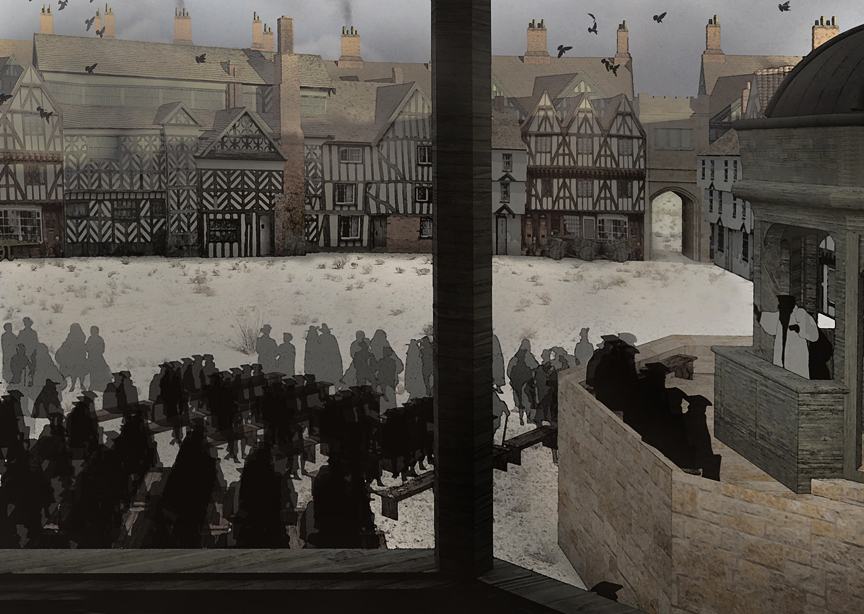
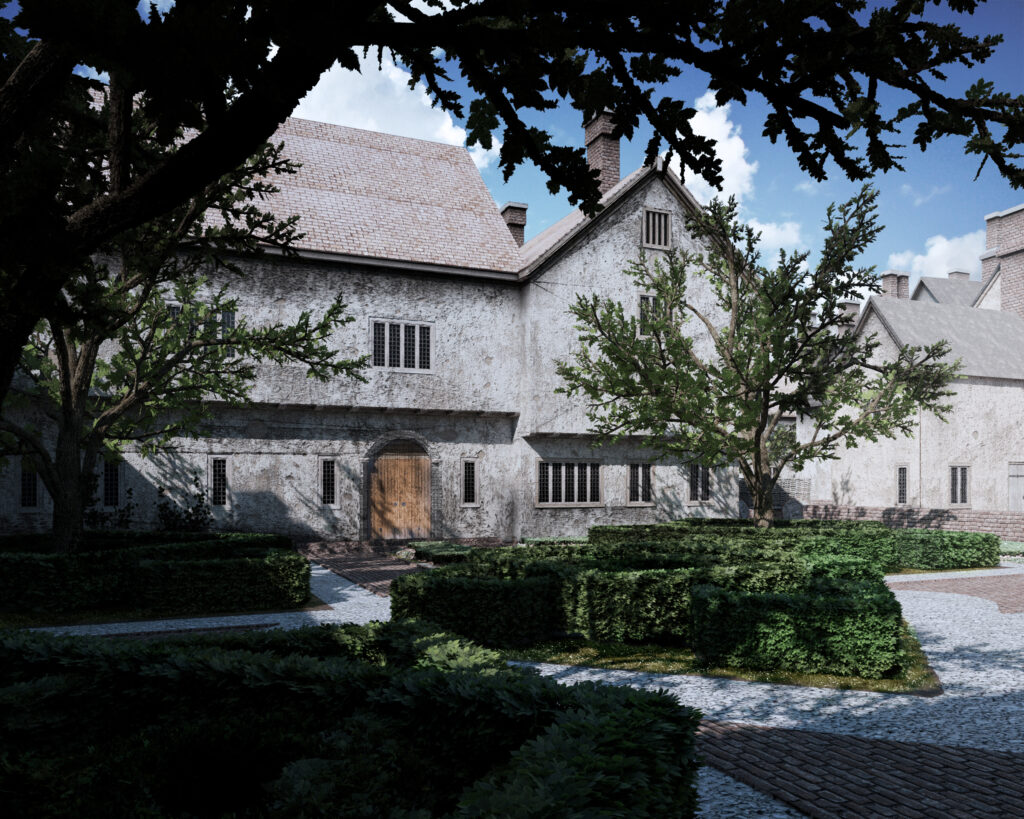
REFERENCES
- For recent studies of Paul’s Churchyard, see Roze Hentschell, St Paul’s Cathedral Precinct in Early Modern Literature and Culture: Spatial Practices (Oxford, 2020) and Margaret Willes, In the Shadow of Pt Paul’s Cathedral: The Churchyard that Shaped London (Yale, 2022).
- For more on this subject, see Peter W. M. Blayney, The Bookshops in Paul’s Cross Churchyard (London Bibliographical Society, 1990)
